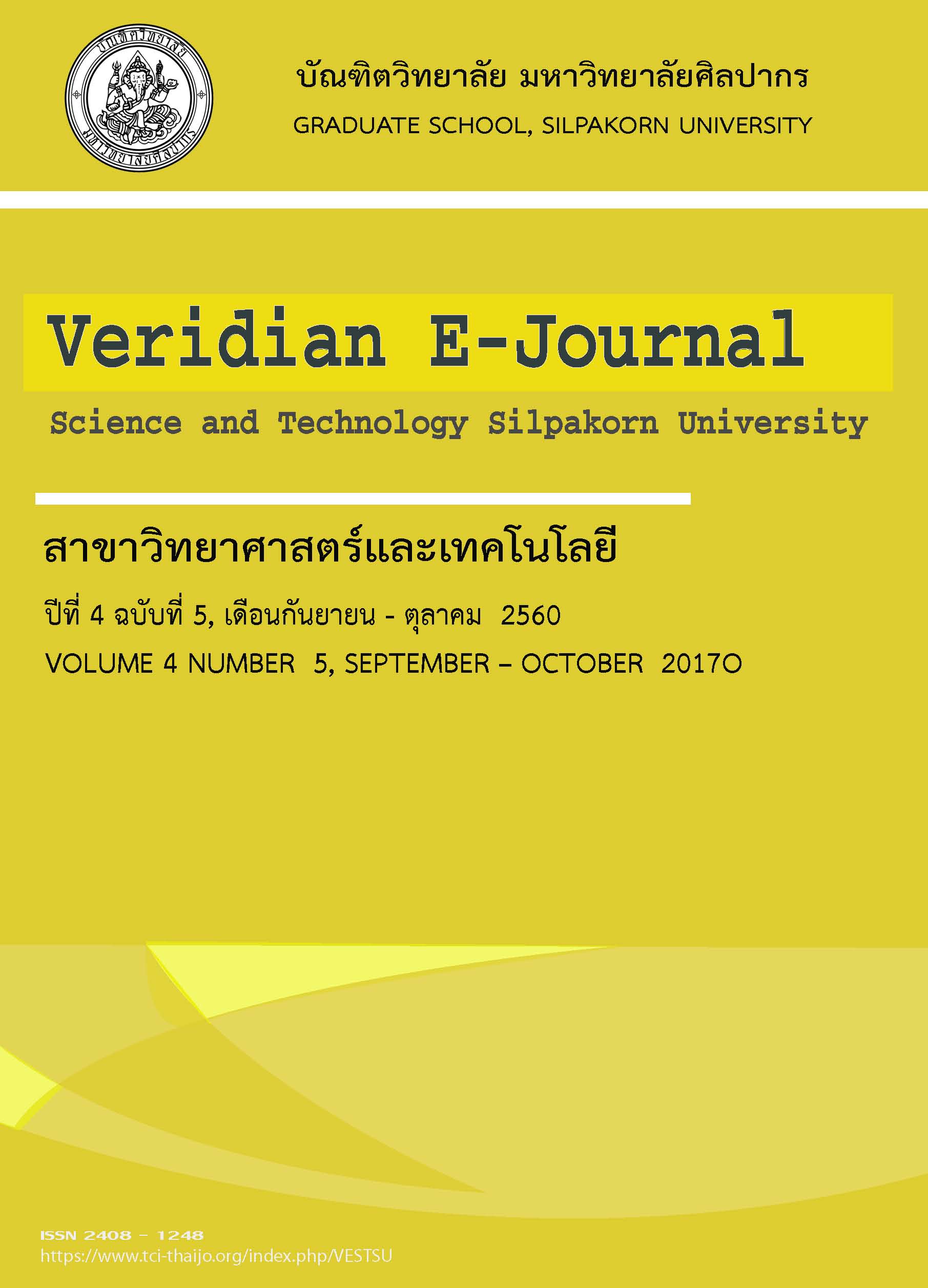อิทธิพลของการเพิ่มขึ้นของอุณหภูมิอากาศและความเข้มข้นของก๊าซคาร์บอนไดออกไซด์ ต่อการปล่อยก๊าซเรือนกระจกจากการปลูกข้าวพันธุ์สุพรรณบุรี 1 (Effect of rising air temperature and CO2 concentration on greenhouse gases emissions from Suphanburi 1 rice variety)
Main Article Content
Abstract
อิทธิพลของการเพิ่มขึ้นของอุณหภูมิอากาศและความเข้มข้นของก๊าซคาร์บอนไดออกไซด์ต่อการปล่อยก๊าซเรือนกระจกจากการปลูกข้าวพันธุ์สุพรรณบุรี 1 ทำการทดลองโดยปลูกข้าวในกระถางใช้ดินชุดกำแพงแสน (Typic Haplustalfs) โดยวางแผนการทดลองแบบ Completely Randomized Design (CRD) ประกอบด้วย 3 ตำรับทดลอง คือ 1). สภาวะปกติ (C) 2). ควบคุมอุณหภูมิให้สูงกว่าสภาวะปกติ 2 องศาเซลเซียส (HT) และ 3). ควบคุมอุณหภูมิให้สูงสภาวะปกติ 2 องศาเซลเซียสและควบคุมความเข้มข้นของก๊าซคาร์บอนไดออกไซด์ให้สูงกว่าสภาวะปกติ 2 เท่า (HTC)
ผลการศึกษาพบว่าเมื่อปลูกข้าวพันธุ์สุพรรณบุรี 1 ในสภาวะที่อุณหภูมิอากาศและความเข้มข้นของก๊าซคาร์บอนไดออกไซด์เพิ่มสูงขึ้น พบว่ามีการปล่อยก๊าซเรือนกระจก คือ คาร์บอนไดออกไซด์และมีเทนเพิ่มสูงขึ้นเมื่อเปรียบเทียบกับสภาวะปกติ โดยที่สภาวะ HT ปล่อยก๊าซคาร์บอนไดออกไซด์และก๊าซมีเทนเพิ่มขึ้น 95.42 และ 57.93 เปอร์เซ็นต์ ตามลำดับ ส่วนสภาวะ HTC ปล่อยก๊าซคาร์บอนไดออกไซด์เพิ่มขึ้น 3 เท่าและปล่อยก๊าซมีเทนสูงขึ้น 64.90 เปอร์เซ็นต์เมื่อเปรียบเทียบกับการเพาะปลูกในสภาวะปกติ และพบว่าคุณสมบัติของดินในสภาวะ HT และ HTC มีค่าปริมาณคาร์บอนทั้งหมด ปริมาณไนโตรเจนทั้งหมด และอัตราส่วนคาร์บอนต่อไนโตรเจนสูงกว่าสภาวะปกติ นอกจากนี้ยังพบว่าสภาพแวดล้อมการเพาะปลูกที่เปลี่ยนแปลงยังส่งผลให้ผลผลิตข้าวลดลงด้วย
This study investigated effect of rising temperature and CO2 concentration on greenhouse gases emissions from The Suphanburi 1 rice variety was planted in pot experiment by using Kampheang Sean soil series (Typic Haplustalfs). The experiment design by Completely Randomized Design (CRD) with three treatments of cultivation condition included 1) rice cultivation in ambient air temperature condition (C or Control), 2) rice cultivation in rising temperature condition (HT), and 3) rice cultivation in rising temperature and elevated CO2 concentration (HCT). Rice cultivation under rising temperature and elevated CO2 concentration emitted higher CO2 and CH4 emissions higher than normal condition. HT treatment induced 95.42 and 57.93% of CO2 and CH4 emissions over control treatment, respectively. While, HTC treatment enhanced 3 times of CO2 emission and 64.90% of CH4 emission over control treatment. It was found that HT and HTC soil properties presented higher total carbon content, total nitrogen, and the ratio of carbon to nitrogen than that control. In addition, rice cultivation under rising temperature and elevated CO2 concentration reduce rice grain yield.

